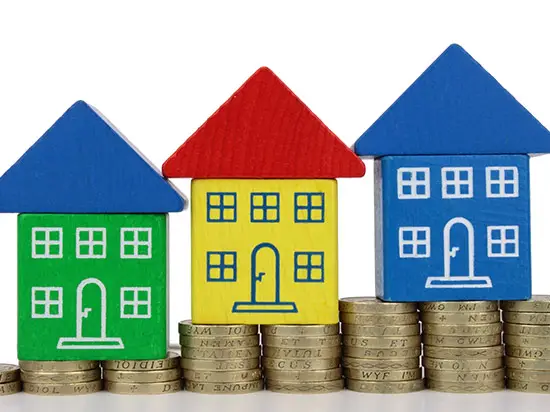Cash-Out Refinancing

Cash-out refinancing is one of several options that homeowners can choose when looking to gain access to the equity in their homes. Cash-out refinancing allows consumers to tap their equity without getting a "second" loan. Read on to see if this option is right for you!
What is cash-out refinancing?
Consumers can tap into the equity in their homes in a variety of ways. There are the familiar methods of home equity loans and home equity lines of credit, but there is also something called cash-out refinancing. With a home equity loan or home equity line of credit, consumers take loans that are separate from their regular mortgage. In these cases, the consumer ends up with two loan payments. Cash-out refinancing is different. When consumers choose this route, they replace the entire mortgage, PLUS borrow additional funds in the form of a cash payout, all rolled into one loan.
Let's look at an example. Jerry is a homeowner who owes $90,000.00 on his mortgage. His house is worth $120,000.00. A few years ago Jerry had a hard time with debt. He used his credit cards like crazy because he wanted a lot of frequent flier miles. He finally got his act together and enrolled in a debt management program to pay off his credit card debt before it got completely out of control. Since then, Jerry has had no problem paying his bills on time. Because he has taken actions that changed the way he handles his credit, Jerry qualifies for a low fixed mortgage rate of 5.95%, which is lower than his current rate of 7.50%. He also needs $20,000.00 in cash to help pay for his mother's nursing home care. In order to obtain both the better mortgage rate and the cash he needs, Jerry decides to go to his bank to apply for cash-out refinancing. When Jerry gets his loan, he will borrow $110,000.00: $90,000.00 will pay off his old mortgage and $20,000.00 will be given to him in the form of a check or direct deposit into one of his accounts.
Jerry spends a lot of time reading about his situation and his options. He has had some debt problems in the past so he is not comfortable committing to a 30-year mortgage. He opts for a 20-year loan instead, which will save him thousands in interest.
Jerry is disappointed about one thing. Because he chose to refinance his entire mortgage, he has to pay over $3,000.00 in points and other closing costs. Jerry did not realize that these costs were required. He thought refinancing would cost nothing up front, like an equity loan or equity line of credit, but this is not the case.
Cash-out refinancing and credit card debt
Jerry decided to go for cash-out refinancing based on his mother's medical needs. Although he will be paying for her nursing home care for the next twenty years, he can live with the peace of mind that comes with knowing his mom is well cared for.
Unfortunately, many consumers are using their homes to pay off credit card debt. Cash-out refinancing is just another way they do this. The perils are the same whenever consumers use home equity to pay off unsecured debt.
- The debt, which was unsecured, is now secured by the home, putting the home at risk.
- The longer payoff period causes consumers to pay tens of thousands of dollars in extra interest.
- The loan does not address the bad habits that led to the credit card debt in the first place. Most consumers will end up with similar amounts of new credit card debt within a couple of years. The consumer is now in a worse financial position than when he/she started. He/She now has a larger mortgage, in addition to the credit card debt, and very little, if any, equity left.
- If the consumer borrows more than 80% of the home's value, he/she may have to pay for Private Mortgage Insurance (PMI). This will increase the monthly payment of the new mortgage loan, negating some of the "benefits" of refinancing.
